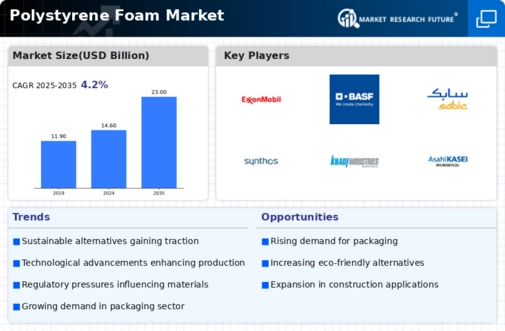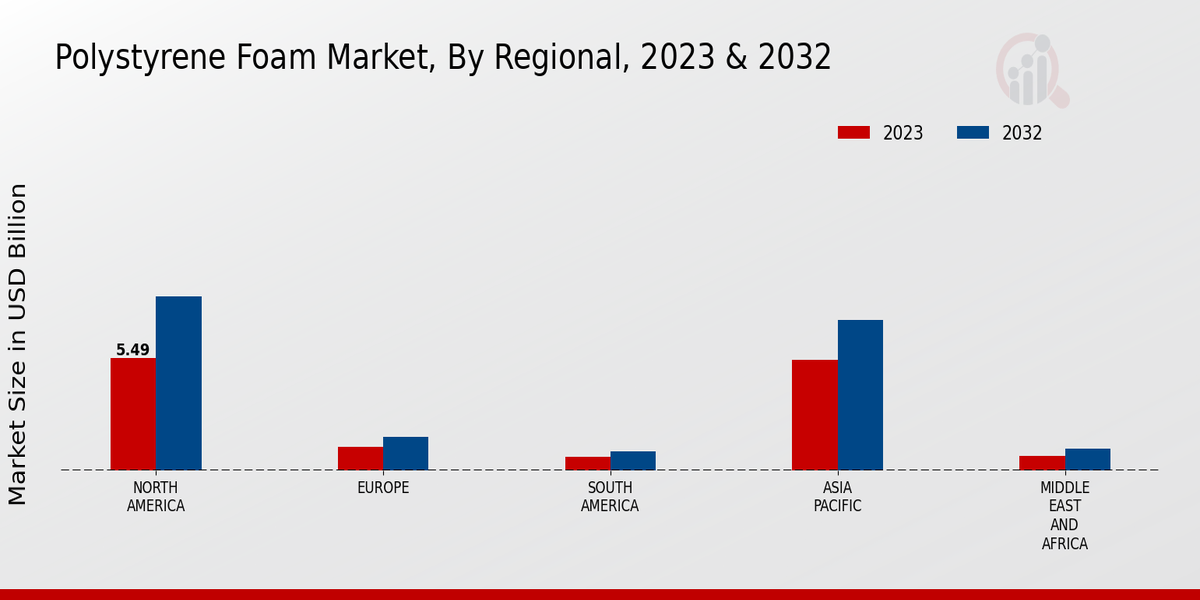Market Trends and Projections
Growth in Construction Activities
The Global Polystyrene Foam Market Industry benefits from the expansion of construction activities worldwide. Polystyrene foam is widely employed in insulation applications, contributing to energy efficiency in residential and commercial buildings. As urbanization accelerates, the demand for affordable housing and energy-efficient structures increases, further propelling the market. The material's excellent thermal insulation properties make it a preferred choice among builders. The anticipated growth in construction is expected to bolster the market, with projections indicating a rise to 23.0 USD Billion by 2035. This trend underscores the material's pivotal role in modern construction practices within the Global Polystyrene Foam Market Industry.
Rising Demand in Packaging Sector
The Global Polystyrene Foam Market Industry experiences a notable surge in demand from the packaging sector, driven by the material's lightweight and insulating properties. Polystyrene foam is extensively utilized in food packaging, protective packaging, and shipping materials. The increasing consumer preference for convenience and the growth of e-commerce contribute to this trend. In 2024, the market value is projected to reach 14.6 USD Billion, reflecting the material's essential role in ensuring product safety and freshness during transit. As sustainability concerns rise, manufacturers are exploring eco-friendly alternatives, potentially reshaping the landscape of the Global Polystyrene Foam Market Industry.
Market Diversification and Applications
The Global Polystyrene Foam Market Industry is characterized by diversification in applications beyond traditional uses. Emerging sectors such as automotive, electronics, and consumer goods are increasingly adopting polystyrene foam for its lightweight and protective qualities. For instance, the automotive industry utilizes polystyrene foam for sound insulation and impact protection, enhancing vehicle performance and safety. This diversification is likely to expand the market's reach and create new growth opportunities. As industries seek innovative solutions, the Global Polystyrene Foam Market Industry may witness a shift in demand dynamics, reflecting the material's versatility and adaptability across various sectors.
Increased Awareness of Energy Efficiency
The Global Polystyrene Foam Market Industry is significantly influenced by the growing awareness of energy efficiency among consumers and businesses. As energy costs rise, there is a heightened focus on materials that contribute to energy savings in buildings. Polystyrene foam's superior insulation properties make it an attractive option for energy-efficient construction. Governments worldwide are implementing regulations and incentives to promote energy-efficient building practices, further driving demand for polystyrene foam. This trend indicates a shift towards sustainable construction materials, positioning the Global Polystyrene Foam Market Industry favorably in the context of global energy conservation efforts.
Technological Advancements in Production
Technological advancements in the production of polystyrene foam are poised to enhance the efficiency and sustainability of the Global Polystyrene Foam Market Industry. Innovations in manufacturing processes, such as the development of more efficient extrusion techniques and recycling methods, are likely to reduce waste and energy consumption. These advancements not only improve the quality of the foam but also align with global sustainability goals. As manufacturers adopt these technologies, they may experience increased competitiveness in the market. The potential for innovation suggests a dynamic future for the Global Polystyrene Foam Market Industry, with opportunities for growth driven by enhanced production capabilities.























